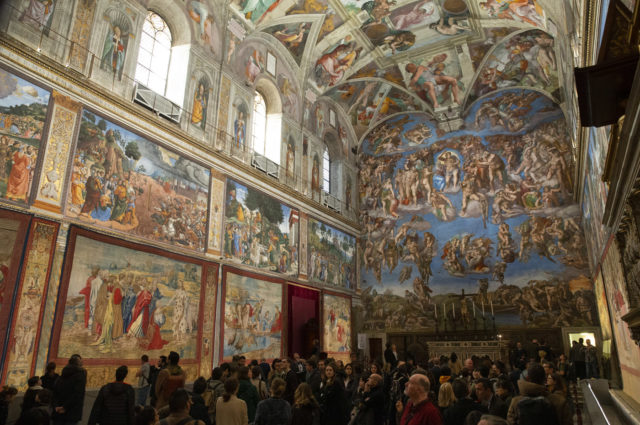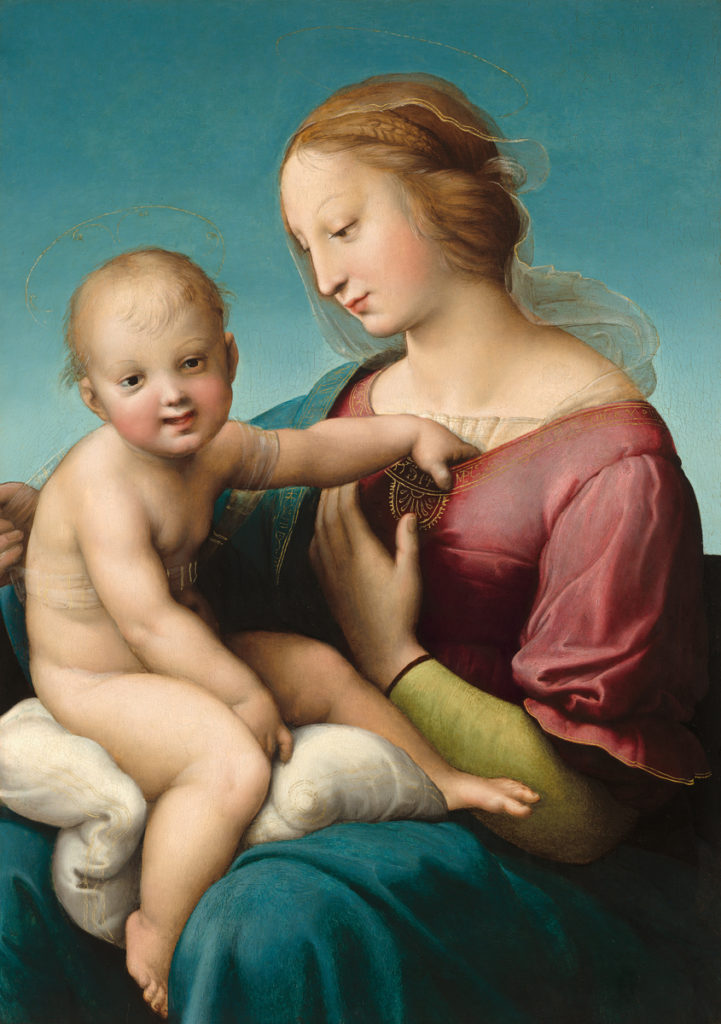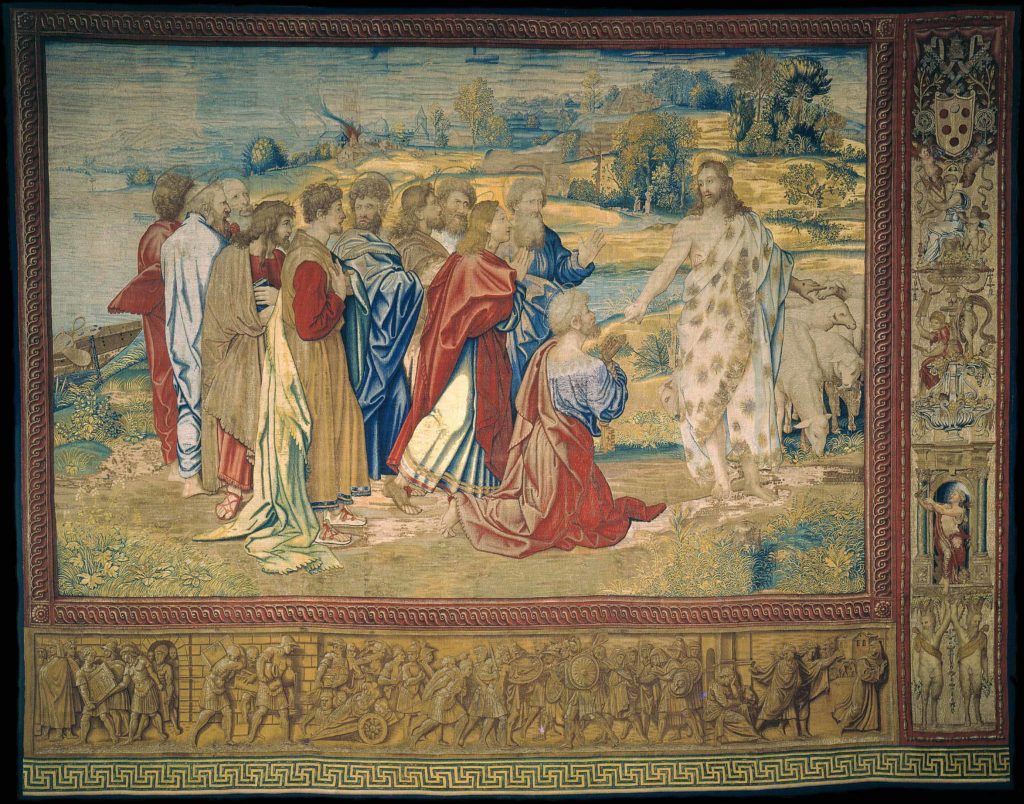
This year marks the 500th anniversary of artist Raphael’s death. This painter would glean the best qualities of his contemporaries, Leonardo and Michelangelo, to create a style all his own. His elegance carried him to work in aristocratic courts, churches and for two popes.
His depiction of Christ would grasp both his divinity and humanity, and capture our imagination. And he accomplished all this before his death at age 37.

Early Years Raffaello Sanzio (or Santi), and known as Raphael, was born in 1483 in Urbino, Italy. In his family, art was a passion as his father was a court painter to the Duke of Urbino. Urbino was a cultured and vibrant town where the duke praised lovely manners above all else.
Learning to be a gentleman was part of the education Raphael received working alongside his father in the art workshop at a young age. These manners would prove helpful in his future career.
Young Raphael showed talent and was given an apprenticeship to Umbria master Pietro Perugino at the young age of 8. Orphaned by age 11, Raphael continued his studies with Perugino while he co-managed his father’s workshop with his stepmother.
By age 17, Raphael finished his education and was considered a “master.” He was in high demand from the start of his career, taking commissions in churches and courts in central Italy.
In 1504 Raphael went to study in Florence with a letter of recommendation from the Duke of Urbino’s mother, ensuring that he would meet all the right people. Leonardo da Vinci was working in Florence during this time.
As Raphael studied da Vinci’s work, his own painting style began to blossom. Raphael’s painting “Madonna del Granduca” shows this development and da Vinci’s influence. Raphael employed da Vinci’s technique, “sfumato” or a softening of the transition between colors. This technique eliminated harsh outlines and made the image more believable to the viewer.

Rome Four years later, an architect from Raphael’s hometown of Urbino, Bramante, was entrusted with the construction of the new St. Peter’s in Rome. He invited Raphael to work alongside him. Bramante introduced Raphael to Pope Julius II and thus began the work that would define Raphael’s career. Raphael was just 26 years old.
For the next decade, Raphael worked almost exclusively for the church, producing nearly 100 works of art, serving as chief architect from 1514-1520 and working for both Pope Julius II and Pope Leo X.
Raphael’s portrayal of the Madonna and child brought a new tenderness and humanity to both mother and son. In his “Madonna of Loreto,” the Madonna plays a game with her veil with the Christ Child, and in “The Bridgewater Madonna,” the two look lovingly at one another. And in his most famous, “Sistine Madonna,” both look out at the viewer with eyes that beg us to come closer.
Raphael painted an adult Christ with a balance of both tranquility and embodiment. This can be best found in his cartoons for tapestries commissioned by Pope Leo X, “The Miraculous Draught of Fishes.” Christ sits composed and peaceful at the head of the boat, whilst the apostles bustle in frenzy about him.
But Raphael’s “The School of Athens” has long been considered his masterpiece. Commissioned by Pope Julius II, “The School of Athens” is the personification of the classical spirit of the Renaissance.
In the painting, nearly every eminent Greek philosopher can be found, gathered about the central figures of Plato and Aristotle, as well as greatest mathematicians and scientists, learning, sharing and teaching one another.
Michelangelo had been working in Rome at the same time and grew to despise the younger, up-and-coming Raphael. After seeing Michelangelo’s Sistine Chapel, Raphael gleaned the older artist’s dramatic poses and groupings of his figures and learned from them, using these techniques in his “School of Athens.”
Michelangelo’s scorn for the young artist was widely known, as was his cantankerous temper. Raphael got the last laugh, painting him as the acrid philosopher, Heraclitus, pouting at the foot of the steps in “The School of Athens.” He even added the brown boots Michelangelo reportedly slept in, so there would be no missing him.
After a swift mysterious illness, Raphael died on Good Friday, 1520, which may also have been his birthday. He was 37 years old. He was able to confess sins and receive last rites.
His funeral was sizeable and held at the Vatican. Four cardinals served as pallbearers and Pope Leo X reportedly kissed his hand farewell. He is buried at the Pantheon in Rome.
Legacy 18th-century English artist Sir Joshua Reynolds said of Raphael:
“The excellency of this extraordinary man lay in the propriety, beauty and majesty of his characters, his judicious contrivance of his composition, correctness of drawing, purity of taste and the skillful accommodation of other men’s conceptions to his own purpose.”
Raphael changed the art world with his supple poses and transformed the way we view the Madonna with his tender and loving portrayals. Raphael absorbed the beauty the Renaissance had to offer and let us see it through his eyes.
Gonzalez is a freelance writer. Her website is www.shemaiahgonzalez.com.






